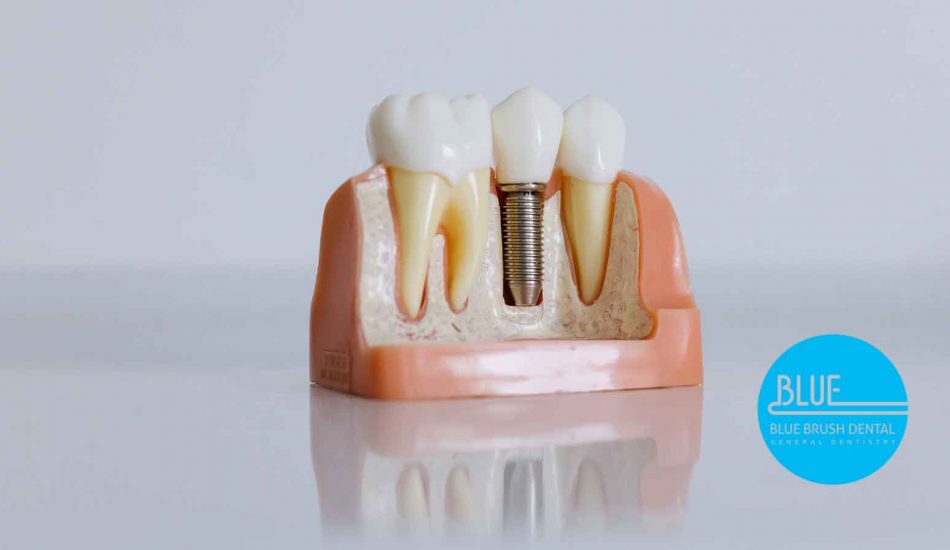Dental implants are widely regarded as a long-term solution for tooth replacement — but unbeknownst to many, there are situations where removal may be necessary. Whether due to health concerns, mechanical failure, or aesthetic reasons, understanding the possibility of removing trusted dental implants is essential for anyone considering or currently living with implants. To clarify this topic, we will explain everything about Dental Implants in Irvine Ca and discuss whether they can be removed in this blog.
What Are Dental Implants and How Do They Work
Dental Implants Irvine are artificial tooth roots made from biocompatible materials, typically titanium or zirconia. These implants are surgically placed into the jawbone, where they fuse with the bone over time through a process called osseointegration. This fusion creates a solid foundation for a replacement tooth (crown) or a bridge, allowing you to eat, speak, and smile without worrying about the stability of your teeth. Implants are popular because they mimic the look and function of natural teeth, providing a long-term solution for those with missing teeth.
However, while dental implants are designed to be permanent, they can be removed under certain circumstances. Whether due to complications, aesthetic dissatisfaction, or health concerns, implant removal is possible through specific surgical techniques. The decision to remove a dental implant depends on several factors, including the reason for removal and the condition of the surrounding bone and tissues.
Reasons for Dental Implant Removal
While dental implants are intended to last for many years, several factors can lead to the need for removal. These issues range from biological complications to mechanical failures, and addressing them early is essential for maintaining oral health.
Failed Osseointegration and Implant Loosening
Osseointegration is the critical process where the implant fuses with the surrounding jawbone. If this process fails, the implant may not properly anchor, leading to instability and loosening. This can happen due to insufficient bone density, excessive pressure on the implant during healing, or certain medical conditions that impair bone health. Implant removal is necessary in such cases to prevent further damage to the jawbone and surrounding tissues.
Infection and Peri-Implantitis
Peri-implantitis is an infection that affects the tissues and bone surrounding the implant. It often occurs when bacteria build up around the implant site, causing inflammation and, eventually, bone loss. If left untreated, peri-implantitis can compromise the stability of the implant and lead to its failure. Removal is often required to eliminate the source of infection and allow the affected area to heal properly.
Nerve Damage and Chronic Pain
Improper implant placement can lead to nerve damage, especially when the implant is positioned too close to a major nerve in the jaw. This can cause chronic pain, tingling, or numbness in the surrounding areas, such as the lips, gums, or chin. In severe cases, the only way to relieve these symptoms and prevent long-term nerve damage is to remove the implant and reassess the treatment plan.
Implant Fracture or Mechanical Failure
Though dental implants are made from durable materials like titanium, they can still fracture or fail due to external trauma or excessive force from biting or grinding. Mechanical failure can also occur if the implant components, such as the abutment or crown, become damaged. In these instances, removing the implant is often necessary to replace the damaged parts or assess whether the implant can be salvaged.
Aesthetic Concerns and Patient Dissatisfaction
Sometimes, a dental implant may not meet a patient’s expectations in terms of appearance. Whether due to poor positioning, gum recession, or an unnatural look, aesthetic concerns can impact a patient’s confidence. If the implant is positioned incorrectly or causes visible issues, removal, and replacement might be necessary to improve both function and appearance. Factors like these can also influence a dental implant’s lifespan, especially if the initial placement doesn’t consider long-term stability and aesthetics.
The Dental Implant Removal Process

Removing a dental implant requires careful evaluation and planning. The Dental Implant Procedure in Irvine can vary in complexity depending on the reason for removal, but it is always designed to minimize damage to the surrounding bone and tissues.
Diagnostic Procedures to Determine Implant Removal Necessity
Before removing a dental implant, your dentist or oral surgeon will perform a thorough diagnostic evaluation. This usually involves detailed imaging techniques like X-rays or CT scans to assess the condition of the implant, surrounding bone, and soft tissues. The dentist will also evaluate pain, infection, or implant mobility symptoms. A clinical examination helps to confirm whether the implant can be saved through less invasive treatments or if removal is the best course of action.
Surgical Techniques for Implant Removal
When it’s determined that an implant needs to be removed, the surgical approach depends on factors such as the implant’s condition, level of integration with the jawbone, and the surrounding tissue health. In some cases, removal can be straightforward, but if the implant is tightly fused with the bone, it may require advanced surgical techniques to ensure minimal impact on the jawbone and surrounding structures.
Some of the surgical techniques used for dental implant removal include:
- Conservative explantation: This is when a loosened implant is gently removed without disturbing the bone.
- Trepanning: This involves using a specialized drill to cut around the implant, preserving the surrounding bone.
- Reverse torque extraction: This applies controlled force to unscrew the implant.
- Sectioning: Where the implant is divided into smaller parts for easier extraction.
- Bone grafting: If bone loss is significant, it is sometimes necessary to rebuild the area after implant removal.
The goal of each technique is to preserve as much of the natural bone structure as possible while ensuring the implant is safely removed.
Anesthesia Options During Implant Removal
Anesthesia is essential to the dental implant removal process to ensure patient comfort and pain management. The type of anesthesia used will depend on the complexity of the procedure and the patient’s comfort level. For those considering a Dental Implant Procedure in Irvine, understanding the available anesthesia options can help ensure a comfortable and stress-free experience. For less complicated removals, local anesthesia may be sufficient to numb the specific area being worked on. However, for more involved surgeries or patients with high anxiety, sedation options such as IV sedation or general anesthesia may be recommended. These options help to ensure a smooth and stress-free experience during the procedure.
Post-Removal Care and Recovery
After the dental implant is removed, post-removal care is crucial for successful healing. This phase involves proper wound care, medication to control pain and prevent infection, and follow-up visits to monitor healing progress. Patients are typically advised to avoid strenuous activities and eat soft foods for a few days following the procedure. Maintaining good oral hygiene while being careful around the surgical site is essential to prevent infection or complications. Recovery time varies depending on the complexity of the removal and whether additional procedures, such as bone grafting, were performed. With proper post-removal care, most patients heal well and can consider future oral surgery options, such as a new implant or other restorative treatments, once the area has fully healed.
Potential Risks and Complications of Implant Removal
While dental implant removal is generally safe, patients should be aware of certain risks and complications. Understanding these potential issues helps make informed decisions and ensures proper care is taken before, during, and after the removal process.
Bone Loss and Structural Changes in the Jaw
One of the most significant risks associated with dental implant removal is bone loss. Since the implant is embedded within the jawbone, removing it can leave a gap, weakening the bone structure. In some cases, bone grafting may be required to restore the area, especially if a future implant or other dental restorations are planned. The removal can also alter the shape and density of the jawbone, impacting its ability to support new dental work.
Damage to Adjacent Teeth or Structures
Implant removal, especially when implants are deeply integrated or located near essential structures, can pose a risk to adjacent teeth, nerves, or blood vessels. Surrounding teeth might experience stress or damage during the removal process. Nerve injury is another potential concern, leading to numbness, tingling, or pain in the lips, gums, or chin. A skilled dentist will take precautions to minimize these risks, but the complexity of the procedure makes damage to nearby structures possible.
Infection and Delayed Healing
Infections can occur following any oral surgery, including dental implant removal. If the surgical site becomes contaminated with bacteria, it can lead to swelling, discomfort, and delayed healing. Patients are often prescribed antibiotics and instructed to maintain oral hygiene to prevent infections. Delayed healing can also occur if there is significant trauma to the bone or surrounding tissues during the removal. This might extend recovery time and impact the overall success of the treatment.
Impact on Future Dental Restorations
Removing a dental implant can complicate future restorative procedures. The structural changes in the bone and any damage to the surrounding tissues can make it more challenging to place a new implant or other dental prosthetics. Patients who plan on getting new implants may need additional treatments, such as bone grafts, to rebuild the area. Working with a reliable dentist is crucial to ensure the removal is done carefully, minimizing any impact on future restorations and maintaining the long-term health of the jaw and teeth.
Alternatives to Complete Implant Removal

In many cases, removing a dental implant entirely is not the only solution. Alternatively, alternative treatments can help salvage or manage the implant without resorting to complete removal.
Implant Salvage Techniques
Dentists can use several techniques when complications arise to save the existing implant. Implant salvage is typically pursued when the implant is stable but surrounding tissues or structures are causing issues.
Some common implant salvage techniques include:
- Debridement is a deep cleaning of the area around the implant to remove plaque and bacteria that may be causing infection.
- Antibiotic treatment to manage and eliminate peri-implantitis or other infections around the implant.
- Laser therapy to treat inflamed tissues and promote healing without removing the implant.
- Bone grafting to restore bone loss around the implant, helping to stabilize it.
- Soft tissue grafts to address gum recession or other issues with the tissue surrounding the implant.
These techniques allow the dentist to address specific issues while keeping the implant in place, ultimately avoiding a complete removal when possible.
Partial Removal and Replacement
In some cases, partial removal of the implant system is an option. For example, if the crown or abutment is damaged or aesthetically unsatisfactory, these parts can be removed and replaced without disturbing the implant post. This approach is less invasive than complete removal and can resolve many issues related to appearance, function, or wear and tear on the implant’s visible components. By preserving the underlying implant, this method helps minimize jawbone trauma and avoid more extensive surgeries.
Non-Surgical Management of Implant Complications
Non-surgical options can effectively manage issues without removing the implant for certain complications. These methods are beneficial for patients experiencing mild infections or discomfort around the implant.
Here, dentists may recommend:
- Medication like antibiotics or anti-inflammatory drugs to manage pain or infections.
- Bite adjustment, where the dentist modifies the alignment of the bite to reduce stress on the implant.
- Regular professional cleaning is necessary to maintain hygiene and prevent the buildup of plaque or bacteria that can lead to complications.
In cases where urgent care is needed, seeking emergency dental services can help address implant issues early, potentially avoiding more invasive procedures. These non-surgical options are less invasive and can provide relief while preserving the dental implant.
Conclusion
Dental Implants in Irvine are a reliable and long-lasting solution for tooth replacement, but complications can arise that may lead to removal or alternative treatments. Understanding the reasons for removal and available options is crucial for making informed decisions, whether it’s due to infection, implant failure, or aesthetic concerns. It is also important to note that while removal may sometimes be necessary, less invasive alternatives can often preserve the implant.
If you’re experiencing issues with your dental implants or need professional advice, contact Blue Brush Dental for trusted and personalized dental services.


